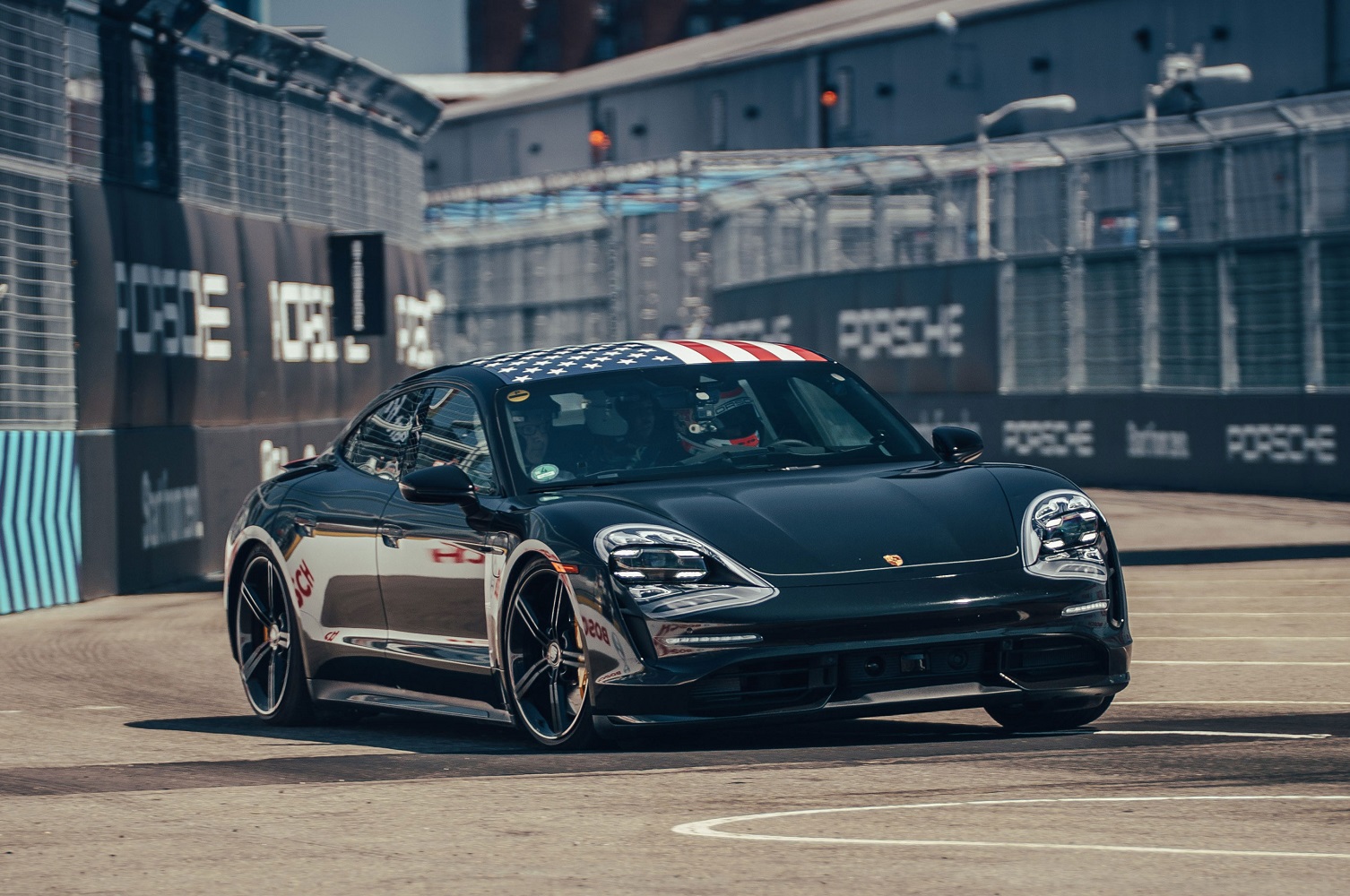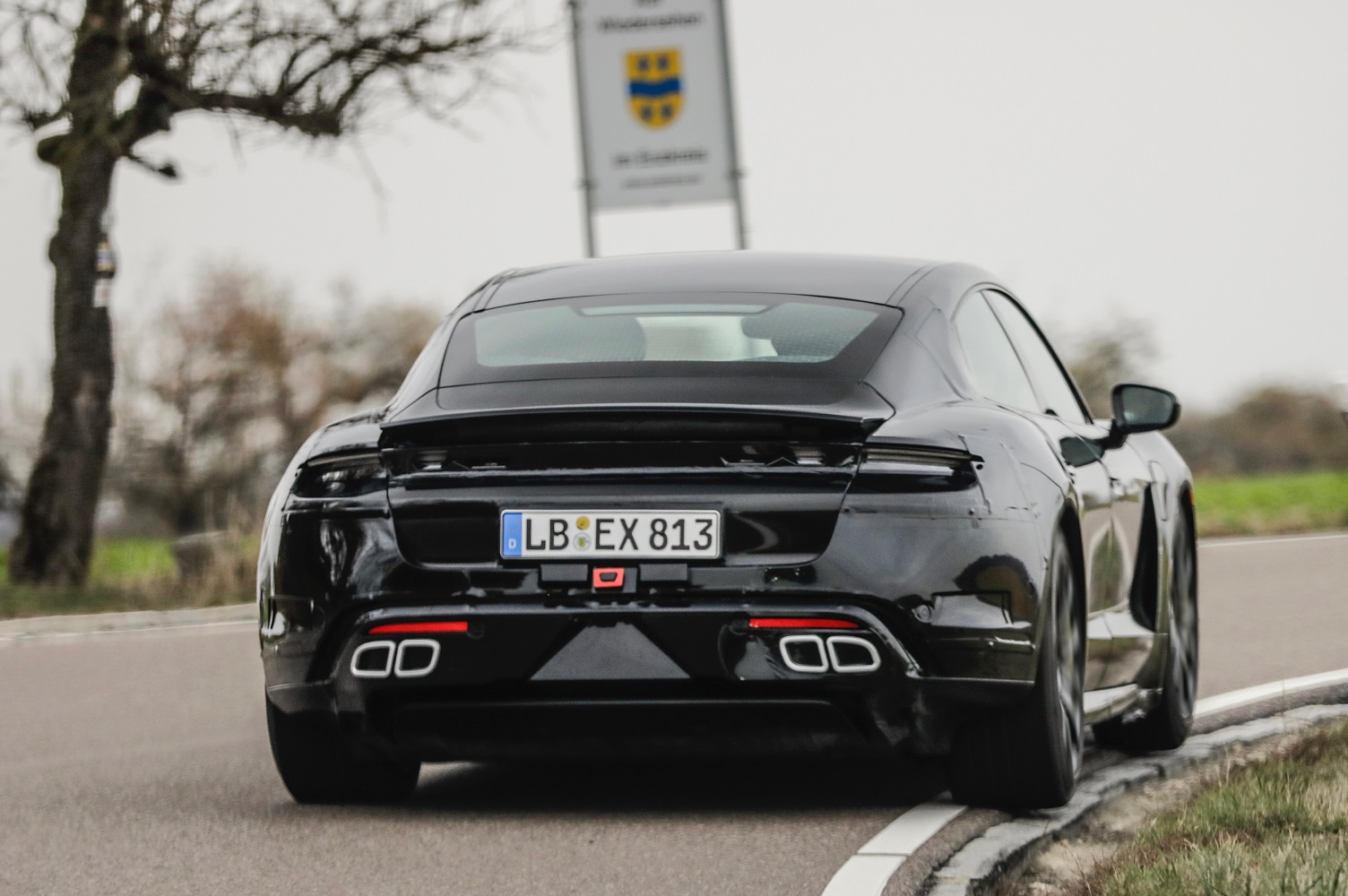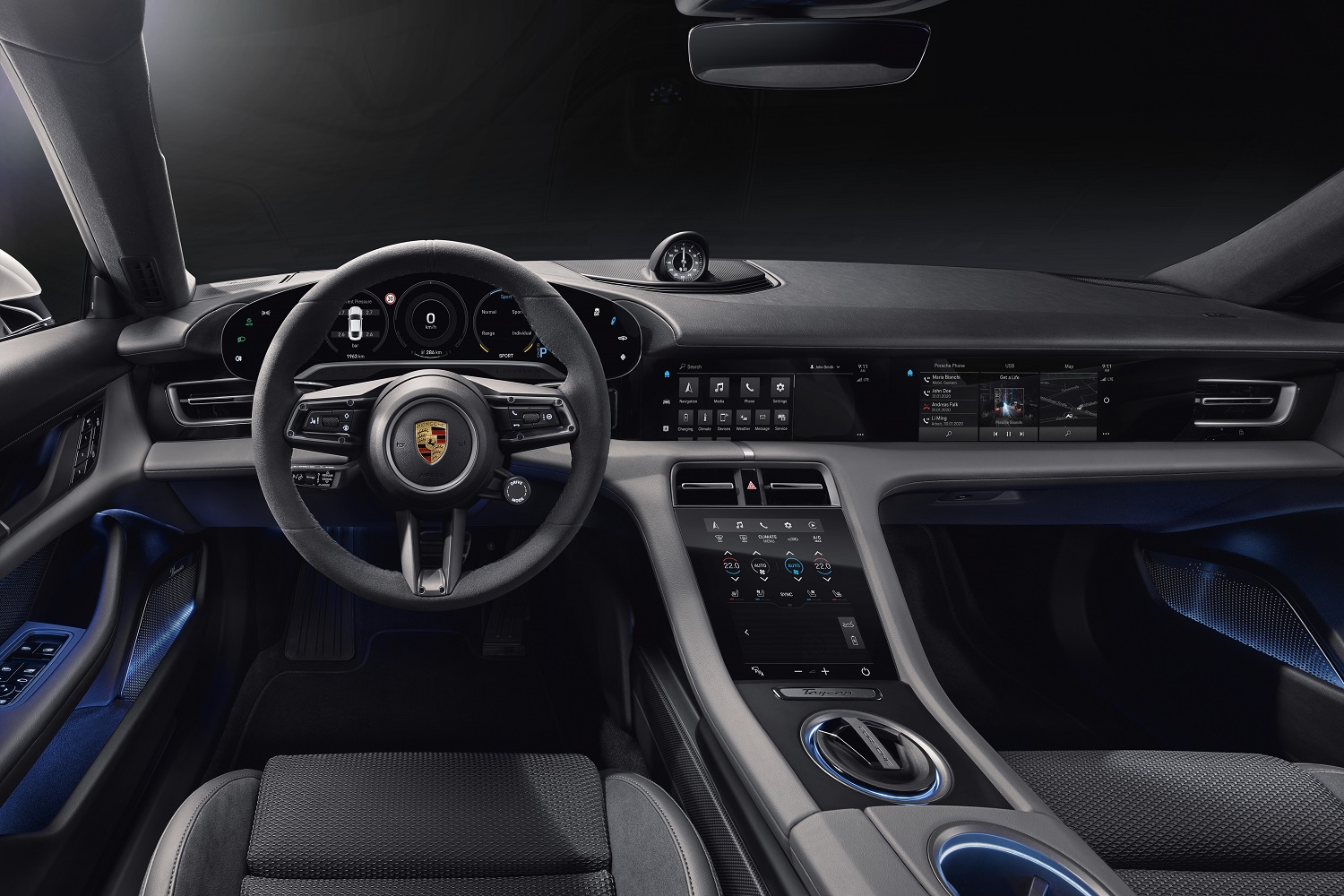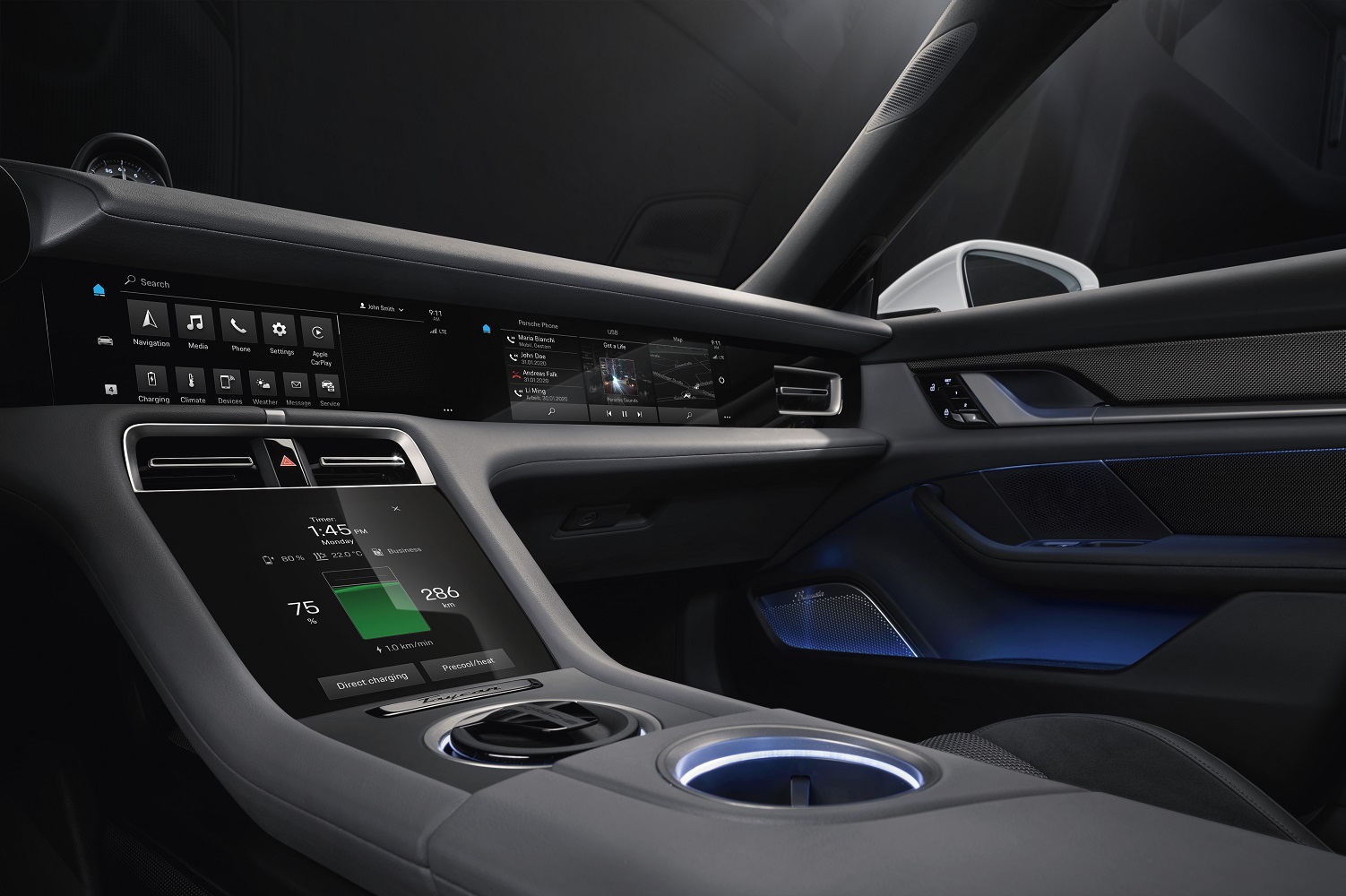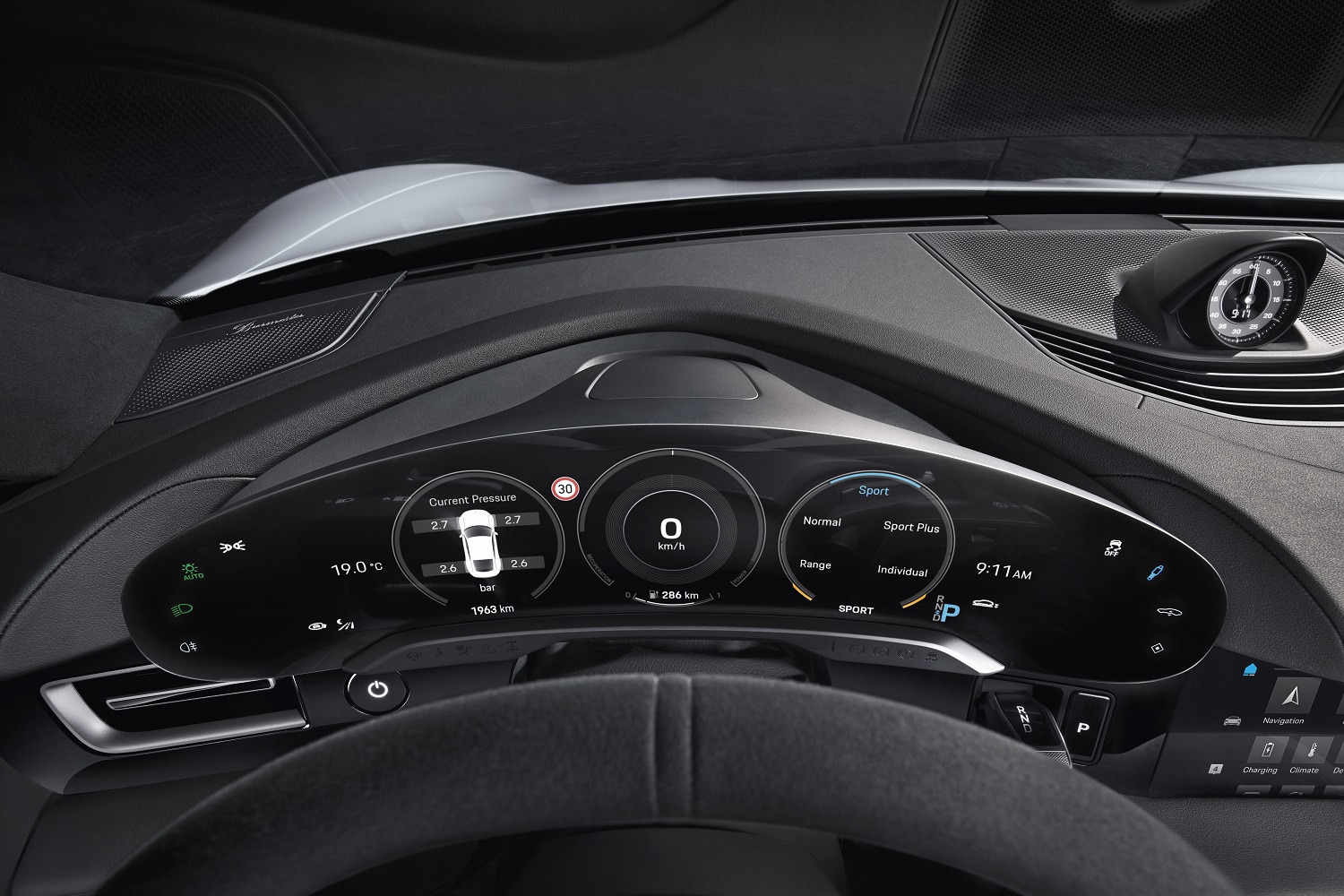Porsche won applause when it confirmed plans to make the all-electric Mission E concept a reality. Now called Taycan (pronounced “tie-con”), the sedan is scheduled to break cover during the 2019 Frankfurt Auto Show, and Porsche is gradually releasing tidbits of information about it. We already know it will be quick, and it will pack more tech features than any car the brand has ever released, including standard Apple Music integration and, when properly configured, more screens than a 718 Boxster has cylinders.
The Tesla-baiting sedan was so well received by enthusiasts and would-be buyers that the German firm announced not a lot will change as it transitions from a show car to a production model. Of course, Porsche had to make a few tweaks to the Taycan to comply with safety regulations all around the world, so it won’t be exactly identical to the concept. In terms of size, the firm’s first battery-electric vehicle will be shorter and a little lower than the Panamera.
E-power, and lots of it
At launch, the Taycan will feature two electric motors, one powering each axle. The front one will deliver 215 horsepower while the one on the rear axle will contribute an additional 402 horsepower, according to Car magazine. Upmarket variants will come with four-wheel steering, an air suspension, active aerodynamic technology, and a 48-volt anti-roll system similar to the one used by the Bentley Bentayga, among other models. At the other end of the spectrum, the base Taycan will come with a steel suspension, a conventional steering system, and a single-motor, 402-horsepower rear-wheel-drive powertrain. Additional versions will join the lineup later in the production run. Anything is possible with the not-insignificant exception of a gasoline engine.
The Taycan will be all-electric, all the time. With 600 horsepower and 650 pound-feet of torque, it will perform the benchmark 0-to-60-mph sprint in under 3.5 seconds in its quickest configuration. The lithium-ion battery pack stuffed under the passenger compartment will store enough electricity for about 300 miles of real-world range, according to Porsche’s estimates, and it will be compatible with the company’s novel 800-volt technology.
Let’s talk in volts
Unique on the market for the time being, an 800-volt charging system will give the battery an 80% charge (about 250 miles) in under 20 minutes — at least theoretically. Porsche predicts 800-volt technology will help make the Taycan more convenient to drive while also making it more dynamic. It’s not just an electric car — it’s an electric Porsche.
Porsche concedes that, while bringing an EV with an 800-volt charging system to the market is feasible, it’s a little bit useless unless there’s a vast network of 800-volt charging stations that it can be plugged into. The firm is currently talking to government officials in Europe, the United States, and China about investing in 800-volt stations. Digital Trends can reveal inductive charging technology will be offered on the Taycan, too.
In January 2019, Porsche announced every Taycan will come with three years of complimentary unlimited charging at Electrify America chargers scattered across the nation. That’s huge; imagine Porsche throwing in three years’ worth of gasoline every time someone purchases a 911. The growing Electrify America network will include 300 highway locations in 42 states, according to the firm, and 180 sites in 17 metro area. Each station will consist of five chargers, though some will boast up to 10 if Electrify America foresees significant demand. Additionally, every Porsche dealership in the United States will install charging stations in preparation for the Taycan’s arrival.
An intelligent Porsche
Like most modern, high-end electric cars, the Taycan will be fully connected and come with some level of autonomy. Level five — full autonomy, where a driver isn’t required — isn’t a priority for Porsche, but the sedan will offer driver-assistance systems (like InnoDrive) designed to take over in a traffic jam or on a long road trip, for example. Porsche is also investing in an over-the-air updating system it calls the “Car for Life” concept. In the not-too-distant future, it will be possible to update the infotainment system and many other systems at the push of a button. The driver could, conceivably, unlock more range.
“Connectivity is certainly something customers are asking for. I think there’s also some degree of creative engineering going on to solve questions that may not yet even be in the minds of customers. That’s what innovation is about. That’s something we will continue to push forward,” Joe Lawrence, the vice president and chief operating officer of Porsche’s American division, told Digital Trends.
Apple Music integration will let occupants access more than 50 million songs by tapping the car’s center-stack-mounted touchscreen a few times, or by asking Siri. They notably will not need to pair their iPhone with their car’s infotainment system to stream their favorite tunes. Apple Music needs a strong internet connection, however, so Porsche will kindly offer every buyer three years of complimentary in-car internet — roaming included. The service also requires an Apple ID, and a subscription priced at $10 a month (or $120 per year).
Porsche explained it drew inspiration from the 1963 911 — which famously made its debut as the 901 — when designing the 16.8-inch digital instrument cluster. It’s wider than the steering wheel, and it’s fully configurable. The cluster’s middle section is occupied by a power meter, not a tachometer like on the company’s gasoline-powered models.
There are at least two additional screens in the cabin. The first is a touch-sensitive, 10.9-inch unit for the infotainment system. The second is an 8.4-inch, haptic feedback-enabled screen on the center console that lets the front occupants change the climate control settings, and manually write an address into the navigation system using handwriting recognition technology. Buyers can pay extra for an additional 10.9-inch touchscreen positioned ahead of the front passenger, and cars ordered with the optional four-zone A/C receive a 5.9-inch panel for the rear occupants.
How much will it cost?
In terms of pricing, the Taycan will slot between the Cayenne and the Panamera. It will carry a base price of about $75,000 before incentives are factored in. In other words, it will fight in the same segment as the Tesla Model S. That figure also places it in the same price bracket as the Audi E-Tron SUV, among other premium electric cars. The catalog won’t stop there. Porsche will expand the Taycan family later in the production run with more powerful models that it could charge about 200,000 euros (nearly $230,000) for, according to Automotive News. Details about those variants haven’t been released.
Though it hasn’t been unveiled, the battery-powered sedan has already generated quite a buzz in the United States and abroad. Porsche reportedly doubled its annual production forecast from 20,000 to 40,000 units, and Bloomberg learned at least 30,000 of those spots are already spoken for less than a month before the car’s official unveiling.
“As you can imagine, the Taycan has been positively received by the public as well as the media. While we haven’t disclosed details around the level of public interest yet, Porsche enthusiasts and dealers are telling us that they can’t have this car soon enough,” a Porsche spokesperson told Digital Trends via email.
What’s next?
Porsche will keep the momentum going by introducing a more spacious version of the car previewed by the Cross Turismo concept, and the next Macan will be entirely electric. The Taycan will also lend its platform to an electric Audi super-sedan previewed by the E-Tron GT concept unveiled in 2018.
Updated on August 23, 2019: Added the latest information about the Taycan’s tech features.

